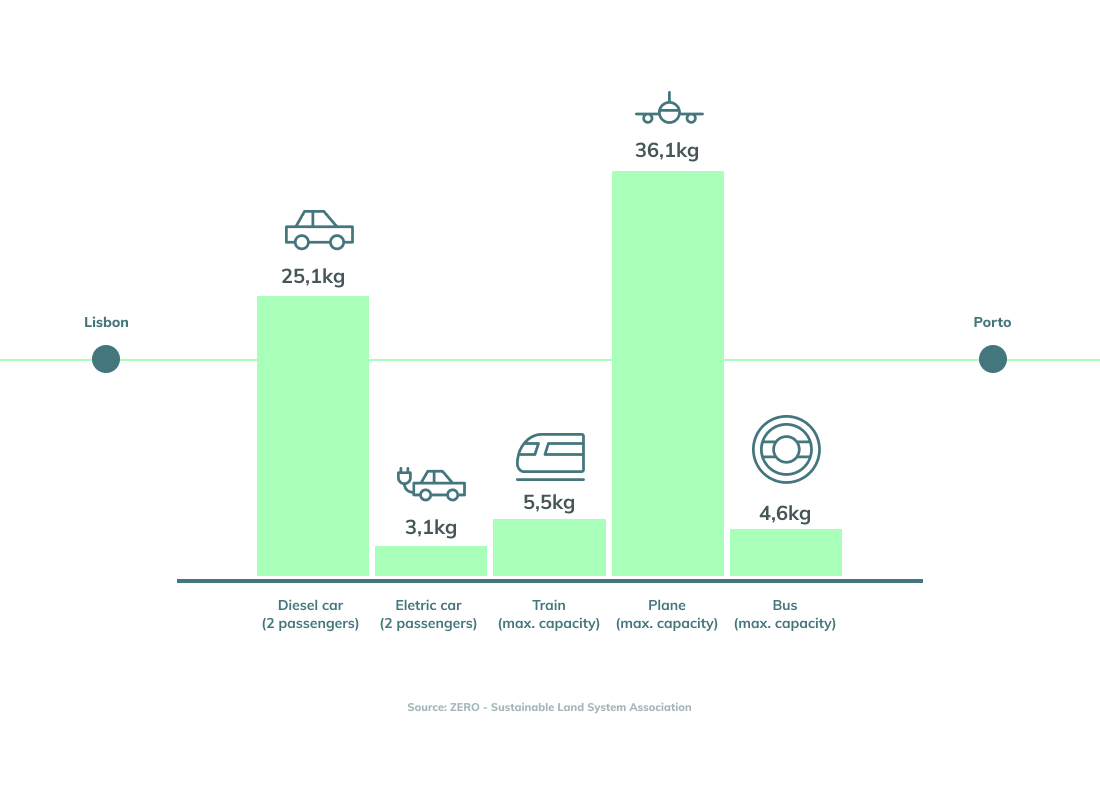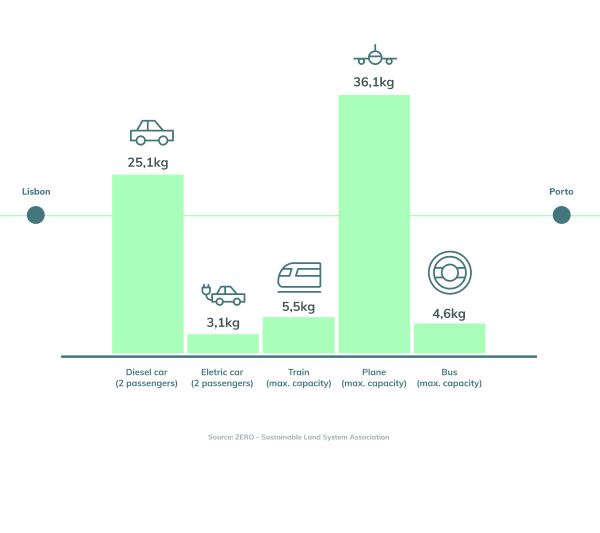The benefits of electric mobility are undeniable for a future in which all energy must be decarbonized. But electric mobility is not a magic wand that will solve all the world’s problems. There are challenges to overcome.
Electric mobility is a gateway to decarbonization. All human activity has an impact on nature — especially activity that is repeated and practiced on a large scale. The increasing electrification of transport is causing an increase in the consumption of electricity in areas where the supply is generally lower.
The good news is that energy is guaranteed for the complete energy transition of the transport sector. “Studies have been carried out by EDP and APREN (the Portuguese Association of Renewable Energies): the problem is not that there is no power, it is the available power. When the cities were built there was a residential area in the center and an industrial zone on the outskirts. Power is available in the industrial zones,” says Henrique Sánchez, founder and president of the Association of Electric Vehicle Users (UVE).
It will be impossible to charge all vehicles at the same time inside a city: an electric car, in terms of energy and power, is equivalent to a house. It would be like doubling the housing stock, and the electricity grid is not designed for this.


Save the grid with smart charging
Managing the existing grid requires smart charging, which can help avoid large-scale bottlenecks in the distribution infrastructure. In short, the grid collects data on energy supplies and generation and uses it to bypass its weaknesses by distributing the charges throughout the day and night.
With all charging points connected to the cloud, it is possible to manage by taking into consideration multiple assumptions and real-time information: at what time is there a greater availability of electricity from renewable sources? Where is the area with the highest consumption? And at what time? Only the smart use of this data can lead to energy efficiency.
For the user, very little of this management is visible. Even with the emergence of multiple suppliers on the market, there is no barrier to the charging process: simply use the CEME card that identifies the power supplier, and connect the charger to the car. Again, this system is smart, and the cost of charging the vehicle is automatically deducted by the user’s contracted energy supplier in their own country, or across Europe via a roaming network.
Every car, an electric warehouse
The unavailability of high voltage supplies in those areas where users prefer to charge their vehicles — at home or at work — is compounded by the fact some of the industrial zones where a high voltage supply is available are currently abandoned.
These zones offer a good opportunity to create charging hubs with ultra-fast and large-scale charging infrastructure built from scratch — a kind of parking lot created for the purpose of delivering energy to vehicles which, due to the size and power requirements involved, cannot be supplied by the urban grid. In this scenario, the electric vehicle gains new features.
“The electric vehicles become electric warehouses,” says Henrique Sánchez. “They are not only capable of being charged, but also capable of delivering electricity to a house, a store, or a business. It's a huge revolution.”
This bi-directional vehicle function is already being tested by EDP, which intends to explore how cars can become an element that supports the grid in the future, depending on the pressure the grid feels at certain times of day, or how the vehicles can be an element offering support to help overcome internal constraints on the electricity supply to buildings or homes.
Solid batteries on the horizon
There are other environmental impacts to consider with the electric car. There have long been questions about the useful life of batteries, their safe disposal, and the exploitation of natural resources like lithium.
Research is being directed towards an ever-smaller use of the metals, such as copper and aluminum, that are used in lithium batteries. The future will consist of greener batteries and increased energy efficiency.
The battery accounts for most of the weight of an electric car. If they can be made lighter, the car will gain kilometers of range because of the reduced effort required.
“I'm not worried about lithium because lithium batteries will soon be a thing of the past.” Henrique Sánchez, President of UVE
“I'm not worried about lithium because lithium batteries will soon be a thing of the past,” claims Henrique Sánchez, pointing to some research that is already bearing fruit. Among these studies, he highlights the work of Helena Braga, of Porto University’s Engineering Faculty (FEUP), who was invited to work with John Goodenough, from the University of Austin, Texas, the inventor of lithium batteries.
Helena Braga is developing a solid battery. “If we open the battery of a Tesla, we find 7,000 small cylindrical batteries connected in series,” says Henrique Sánchez. “Because they have a liquid electrolyte, they each need to be encased in steel. If we replace it with a solid battery, which is made of glass in the specific case of Professor Helena Braga, we no longer need the casing,” which will significantly reduce the battery’s weight.
There other examples. Manufacturers like Volkswagen, Tesla, and Toyota are also developing solid-state batteries using sodium as an electrolyte.
Currently, the vast majority of manufacturers have been extending the warranty on batteries, reflecting the technological developments taking place. “The warranties offered by manufacturers are typically between seven and eight years, but recently we have seen one manufacturer giving a 10 year or one million km warranty. Nevertheless, it is expected that the battery will continue to degrade throughout its life (as is the case with our cell phone batteries); however, it will remain perfectly useful for the daily routine of the vast majority of users: when the base range is 400 km, if 25% of the battery is lost, it still has a 300 km range,” says Pedro Miguel Ferreira, from EDP Inovação.
Batteries deserve a second chance
Taking this as the battery expiry date would be an environmental problem, but there are routes to offering these batteries a second life: they can also be essential to the development of an electricity grid for renewable energy.
Reusing them to store energy from renewable sources is just one of the second-life chances available to these most widely used batteries at the moment. A good example of this is what EDP Labelec is testing: stationary batteries made from batteries previously used in cars. The idea is to store the energy produced by renewable sources whenever they are generating a lot of energy, with this green energy then being used when there is no wind or sun.
"The second life of batteries is a market that is going to grow a great deal. A battery that has reached the end of its life in a car can serve perfectly as a stationary battery at home,” explains Pedro Miguel Ferreira of EDP Inovação.
“Peaks in the production of energy [via renewable sources] do not exactly match peak consumption at home,” says Pedro Miguel Ferreira, recalling that electricity generation from renewable sources, such as solar panels, is intermittent. When they store power, the batteries provide “stability to the system,” he says.
We are talking about an increase in battery life, potentially of up to 30 years. “At the end of this time, 95% of it can be recycled — we can open the modules and cells to produce new ones,” says Henrique Sánchez. This principle is already being followed by Tesla, for example, which recycles all its batteries whenever it cannot give them a second life.

